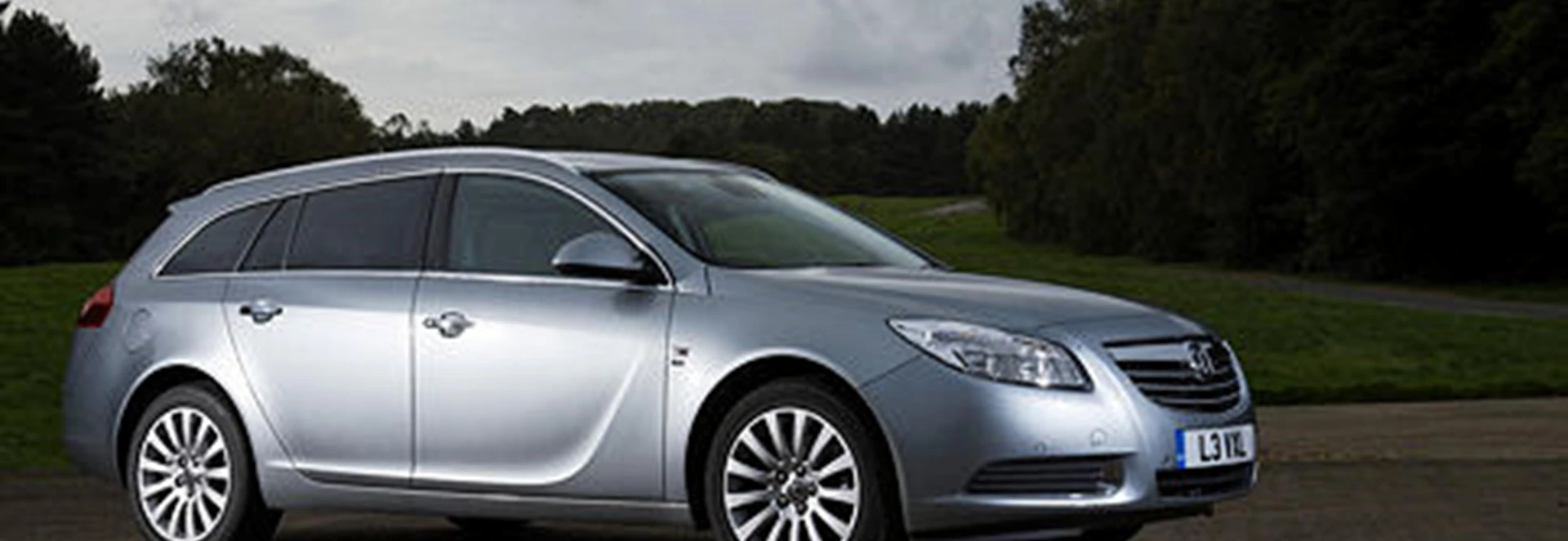As a regular reader of CARkeys you will instantly have spotted that we reviewed another Insignia Sports Tourer BiTurbo back in June. In nearly every respect this one is identical, the single exception being that it has four- rather than merely front-wheel drive.That difference naturally leads to several others, the most obvious of which is a price hike of roughly £2500 to just over £31,000, not including any optional extras you may choose. This, I feel, takes the Insignia into slightly uncomfortable territory, since its interior materials don't give the impression of being what you ought to expect of a car costing more than thirty grand, though perhaps the fact that the car I drove immediately before this one was an Audi A6 made me over-sensitive about this.The extra weight and complication of the 4x4 system have small but noticeable negative effects on the straightline performance, fuel economy and CO2 emissions, the last of these meaning that you have to pay £135 per year in Vehicle Excise Duty rather than £120.Why bother, then? Well, it doesn't hurt that the 192bhp of the twin-turbo engine - the most powerful diesel ever fitted by Vauxhall to a production model - is divided among all four wheels rather than just the front two. That could be useful in extreme situations, though the Insignia, unlike the more recently launched Astra BiTurbo, is hardly a sporting car, and I doubt that many owners will be keen to explore its limits.Perhaps the BiTurbo 4x4's best role would be as a towcar. With a heavy trailer pushing down on the back axle and trying to lift the front off the ground, the better distribution of power would certainly be useful.And the characteristics of the engine would be just right for the job. Forget the 192bhp figure - the real benefit of the BiTurbo motor in this context is its low-speed behaviour, when only the smaller of the two compressors is in action. Useful power is being produced right down at 1100rpm, so the engine does useful work across nearly its entire operating range from not much above tickover to the point where it just can't spin any faster.This flexibility should also help with fuel economy, though in the early part of this test it didn't seem to. I wasn't expecting to get close to the official EU figure of 50.4mpg, but I did hope for better than the 37mpg I averaged over the first few days. During that period, though, I was mostly driving in town or doing short country runs, generally on hilly roads, and that's always going to lead to high fuel consumption.A subsequent run of around 170-miles, mostly on flowing A roads, made quite a difference, bringing the average up to around 40mpg. It possibly brought the battery charge up to an important level, since from then on the Insignia's start/stop system worked nearly every time the car came to a halt. Before that, it had hardly worked at all.More general information about the car can be found in that front-wheel drive test, but here are some general points: the boot is substantial, rear visibility is absolutely terrible (I made the mistake of driving forwards into a parking space once and took more than a minute to reverse out again, being fearful of driving into something or someone I couldn't see), rear legroom is surprisingly limited for such a large car, and the excellent FlexRide adaptive damping system, which for some reason seems to work better on front-wheel drive Vauxhalls than 4x4 ones, was nevertheless quite effective here.Of the three modes - Sport, Tour and normal - I tended to go for Sport most of the time because, assuming a smooth road surface, it provided very good body control. On rougher surfaces it made the ride too jiggly, but the optional large wheels and low-profile tyres of the test car probably had a lot to do with that.Finally, this car had bi-xenon headlights with switchable adaptive main beam, but I never quite got the hang of that. It's worth persevering with, though, because when it's switched off the beam proved to be incredibly high even on dip, to the understandable and often robustly-expressed fury of oncoming traffic. I'd have done almost anything for a method of manual beam adjustment, but it's not available with the bi-xenons. Engine 1956cc, 4 cylinders Power 192bhp Transmission 6-speed manual Fuel/CO2 50.4mpg / 149g/km Acceleration 0-62mph: 8.6 seconds Top speed 139mph Price £31,170 Details correct at publication date

Our Rating



